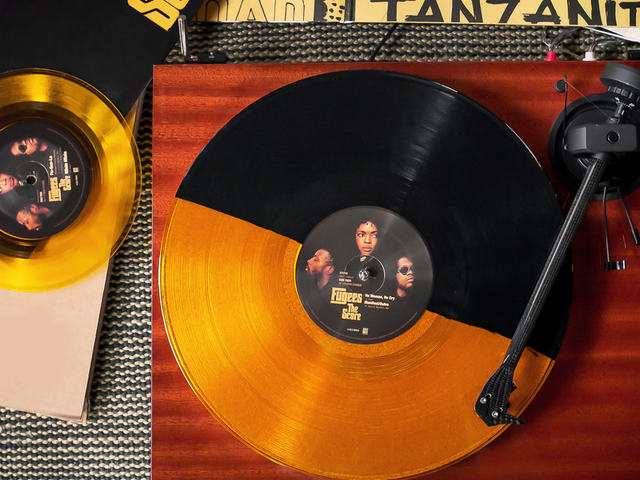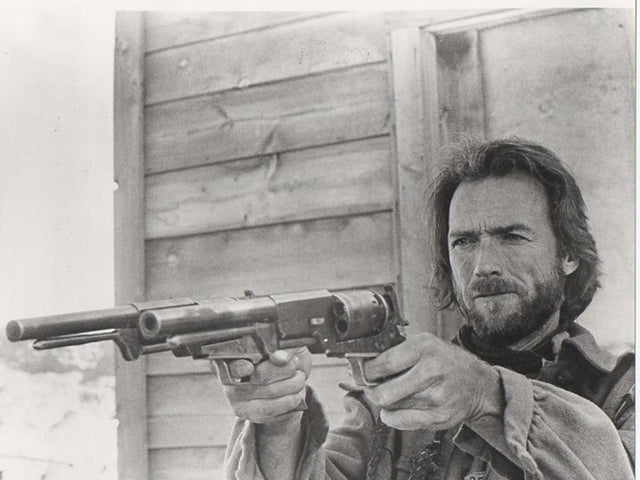A subtle but consistent Hollywood narrative is that when audio equipment does appear in a shot-- particularly when it is owned by the villain of the piece-- it will be a substantial system that is usually produced by a single manufacturer. What better way to establish an element of good taste than a sleek tower of uniform gear? While some audio companies dedicate themselves to producing a single product category, others are proficient in very wide range of disciplines. These companies will argue that with everything designed by the same people, to the same requirements will result in a better performance than mixing and matching from companies with different approaches.
With specific regard to turntables, this argument, if anything, becomes more compelling. With a format where pretty much everything makes a difference, using components that were built with a view to interacting with one another seems like a very good idea. Of course, this runs counter to the idea that even affordable turntables can be fitted with parts from other manufacturers to tune the performance to your preferences. So which is the ‘better’ concept?
To make sense of sense of this, we’ll focus mainly on the turntable before briefly looking at the whole system. One of the reasons for this is that the number of companies who can sell you a whole system from tip of the stylus to cone of the speaker is relatively low and many of them are firmly at the very high end of the scale so their relevance to us mortals is limited. Buying a turntable where the whole device can come from one place is rather easier though so we can start there.
To an extent, many times the amount of choice you have in this matter is limited. Most affordable turntables are largely the work of a single company with the turntable and arm being designed to work together and come as a package. The two components are sufficiently closely paired together that changing the arm on a turntable of this nature is pretty much impossible. The advantages of doing this are pretty straightforward though. The turntable is easier to set up, will reliably do what the manufacturer says it will and allows you to buy a device that ensure you get playing records with a minimum of fuss.
Even within these designs though, there are a subset of companies that also produce their own cartridge to stick on the end of the arm rather than selecting one from another brand or leaving you to decide. Making cartridges is an absurdly specific undertaking and one that even some very proficient engineering concerns will not do themselves. For those that do though, there are some extra benefits. The behaviour of the arm can be taken into account and the cartridge engineered to work with it. This will also extend to ensuring that the cartridge is supported at the right height and angle above the record without needing to adjust this on the arm. In the case of companies like Rega, some user friendliness can be engineered in with this approach too. If you attach a Rega cartridge to a Rega tonearm, you can use three bolts instead of the more usual two which means that it will automatically align correctly.
It is just as important to note that many companies feel that these advantages continue well into the high end. Rega uses that same three bolt mount for their flagship Aphelion cartridge and RB2000 arm- a combination that will cost you over $7,000- and you can see on devices like the Mo-Fi Ultradeck reviewed on this site recently are delivered as a whole turntable that goes together in an expected way and will work in an expected way. In fact, as prices climb and engineering in the designs becomes more complex, you might reasonably argue why would you take the chance and assemble a turntable that uses parts from different manufacturers?
The answer to this comes in three parts. The first is that for many people- as the existence of one make players at every price demonstrates- you wouldn’t. The next is that if you are interested in certain items some manufacturers are really masters of one specific product. Many cartridge builders for example produce little else so if you are going to enjoy their product, you are going to have to take a punt on a bit of mixing and matching. Such are the different requirements of making all the parts of the analogue replay chain, it should not be taken as too surprising that many companies decide against building everything themselves. From here, the third part to the answer is that once you have decided to mix and match, the results can be tailored to your specific needs, the idea of being tied to one source of parts can be a little frustrating.
A classic example of this can be seen with two notionally similar record players owned by myself and a good friend. Both are Michell Gyrodecs but as they perform different roles, they are differently fitted out. Mine has a tonearm from SME. This has a combination of extremely consistent behaviour with a wide selection of cartridged and a detachable headshell that makes it ideal for review and test work. As a result of this, it has different cartridges on it depending on what it is doing at the time. My friend has a real job and unencumbered by the need to repeatedly chop about the kit on his Gyrodec instead uses an Audio Note tonearm with a cartridge from a company called London Decca. Connected to the same system the two Gyrodecs behave very differently- a level of customisation to specific needs that can only be achieved by going for parts from multiple companies.
These arguments-both for and against- can be made for your wider system too. I use an amp and digital source from the same company because I enjoy being able to control it all from a single point and I like the performance that they achieve together. As one end my lounge is constant mass of wires, heat and danger, I am generally beyond considerations of aesthetics but I appreciate that having a sleek stack of the same gear can look very slick too and there’s no reason why your equipment shouldn’t be as easy on the eye as it is on the ear.
Equally, just as there are companies that excel at making cartridges, there are those that specialise only in amps, digital sources, speakers and so on. Obviously, from a sales and marketing perspective, most companies will be as keen for you to buy as much as possible from them but talking to owners and looking at reviews and feedback will give you a good idea about who is strong in given areas and not so strong in others.
Of course, if this all leaves you cold, there are companies that can supply every last part of an audio system themselves and you can go for it in the knowledge that all of it will go together and work perfectly from the get go. Whether or not, your listening room will look as slick as that of a good Hollywood villain is going to be up to you but at least you’ll know that everything will be just so.
Ed is a UK based journalist and consultant in the HiFi industry. He has an unhealthy obsession with nineties electronica and is skilled at removing plastic toys from speakers.
Join the Club!
Join Now, Starting at $44Exclusive 15% Off for Teachers, Students, Military members, Healthcare professionals & First Responders - Get Verified!










